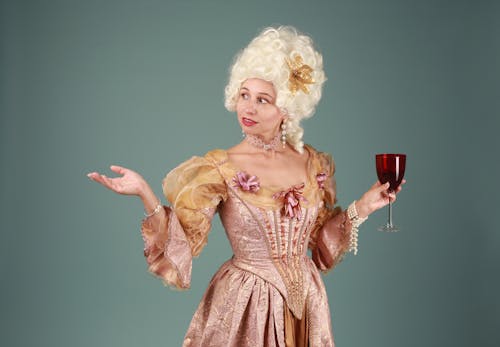
Fashion is not just a reflection of contemporary aesthetics but also a dialogue with the past. The history of fashion icons is a testament to this dynamic interplay, illustrating how legendary figures have influenced modern trends and redefined style. This article delves into the evolution of fashion icons, exploring how past legends continue to inspire today’s trends and shape the industry.
1. The Concept of Fashion Icons
1.1. Defining Fashion Icons
Fashion icons are individuals whose style and influence transcend time, leaving an indelible mark on the fashion world. They are often characterized by:
- Innovative Style: Unique and trendsetting fashion choices that set them apart.
- Cultural Impact: Influence on public perceptions of style and beauty.
- Enduring Legacy: Continued relevance and inspiration across generations.
1.2. The Evolution of Fashion Icons
The concept of a fashion icon has evolved from aristocratic figures to modern celebrities and designers. Historical figures were often recognized for their opulent and revolutionary style, while contemporary icons reflect current trends and media influence.
2. Historical Fashion Icons and Their Influence
2.1. Marie Antoinette: The Queen of Couture
- Historical Context: Marie Antoinette, the Queen of France during the late 18th century, was renowned for her extravagant fashion choices. Her lavish wardrobe and intricate hairstyles set new standards for court fashion.
- Influence on Fashion: Marie Antoinette popularized luxurious fabrics such as silk and velvet, and her elaborate gowns influenced European fashion trends. Her style epitomized opulence and the art of dressing for grandeur.
- Legacy: Marie Antoinette’s influence is evident in the continued appreciation of historical fashion and the occasional revival of Rococo-inspired styles in modern couture.
2.2. Coco Chanel: The Pioneer of Modern Elegance
- Historical Context: Coco Chanel revolutionized fashion in the early 20th century with her minimalist and elegant designs. Known for the little black dress, Chanel No. 5 perfume, and the Chanel suit, she challenged traditional norms and introduced a new era of fashion.
- Influence on Fashion: Chanel’s designs emphasized simplicity, comfort, and understated elegance. She democratized fashion, making high style accessible to women of all classes.
- Legacy: Coco Chanel’s influence persists in the enduring popularity of her designs and her role in shaping contemporary women’s fashion. Modern designers frequently draw inspiration from her iconic silhouettes and innovative use of fabrics.
2.3. Audrey Hepburn: The Quintessential Style Icon
- Historical Context: Audrey Hepburn, the British actress and humanitarian, became a fashion icon in the 1950s and 1960s through her roles in films like “Breakfast at Tiffany’s” and “Sabrina.” Her partnership with designer Hubert de Givenchy solidified her status as a style legend.
- Influence on Fashion: Hepburn’s elegant and timeless style emphasized simplicity, grace, and sophistication. Her preference for clean lines, classic accessories, and understated glamour set new standards for fashion.
- Legacy: Hepburn’s influence is reflected in the continuing popularity of her signature looks, such as the little black dress and ballet flats. Her style remains a reference point for modern fashion.
2.4. David Bowie: The King of Avant-Garde
- Historical Context: David Bowie, the British musician and actor, became a fashion icon through his ever-evolving style and avant-garde persona. His alter egos, such as Ziggy Stardust, challenged traditional gender norms and embraced eclectic fashion.
- Influence on Fashion: Bowie’s bold, experimental fashion choices influenced both music and fashion. His androgynous looks and innovative wardrobe designs redefined notions of gender and style.
- Legacy: Bowie’s impact is seen in the continued popularity of gender-fluid fashion and the embrace of eclectic, boundary-pushing designs. His influence extends beyond fashion into music and pop culture.
2.5. Grace Kelly: The epitome of Grace and Elegance
- Historical Context: Grace Kelly, an American actress turned Princess of Monaco, was known for her timeless elegance and sophisticated style. Her glamorous wardrobe and poised demeanor made her a fashion icon of the 1950s and 1960s.
- Influence on Fashion: Kelly’s style emphasized classic beauty and refined sophistication. Her preference for elegant gowns, tailored suits, and classic accessories set high standards for feminine elegance.
- Legacy: Grace Kelly’s influence is evident in the continued appreciation of classic, elegant fashion. Modern designers often draw inspiration from her refined aesthetic and graceful demeanor.
3. How Past Legends Inspire Today’s Trends
3.1. The Revival of Retro Styles
- Historical Influences: Many contemporary fashion trends are inspired by past styles, such as the return of vintage silhouettes and fabrics. Designers frequently reference the glamour of past icons like Marie Antoinette and Audrey Hepburn.
- Modern Adaptations: Retro styles are reimagined with modern materials and techniques, creating a blend of classic elegance and contemporary fashion.
- Example: The resurgence of 1950s-inspired fashion, including fitted dresses and high-waisted skirts, reflects Audrey Hepburn’s enduring influence.
3.2. Gender Fluidity and Androgynous Fashion
- Historical Influences: David Bowie’s avant-garde and androgynous fashion has paved the way for modern discussions on gender fluidity and non-binary fashion.
- Modern Adaptations: Contemporary designers are embracing gender-neutral clothing, drawing inspiration from Bowie’s boundary-pushing style and challenging traditional gender norms.
- Example: Fashion collections featuring androgynous silhouettes and unisex designs reflect the ongoing influence of David Bowie’s revolutionary approach to style.
3.3. The Emphasis on Minimalism and Simplicity
- Historical Influences: Coco Chanel’s emphasis on minimalism and simplicity continues to influence modern fashion. Her designs celebrated clean lines and understated elegance.
- Modern Adaptations: Today’s fashion often incorporates minimalist principles, focusing on classic cuts, neutral colors, and high-quality fabrics.
- Example: The popularity of minimalist fashion brands and collections that emphasize simplicity and elegance echo Coco Chanel’s enduring legacy.
3.4. The Embrace of Opulence and Luxury
- Historical Influences: Marie Antoinette’s luxurious and opulent style has inspired a renewed interest in high-fashion fabrics and intricate designs.
- Modern Adaptations: Contemporary designers frequently incorporate luxurious materials and elaborate details into their collections, drawing from the grandeur of past fashion icons.
- Example: The use of rich fabrics like velvet and silk in modern haute couture reflects the influence of historical opulence.
3.5. The Celebration of Timeless Elegance
- Historical Influences: Icons like Grace Kelly have set standards for timeless elegance, emphasizing classic beauty and refined style.
- Modern Adaptations: Fashion trends that prioritize elegance and sophistication often draw inspiration from past icons, incorporating classic designs into contemporary wardrobes.
- Example: The ongoing popularity of classic tailored suits and elegant evening wear reflects the influence of Grace Kelly’s sophisticated style.

4. Conclusion
The history of fashion icons reveals a rich tapestry of influence and inspiration, demonstrating how past legends continue to shape contemporary trends. From Marie Antoinette’s opulent gowns to Coco Chanel’s revolutionary designs, each icon has left a lasting impact on the fashion industry. By revisiting and reinterpreting these historical influences, modern fashion continues to evolve while honoring the timeless elegance and innovation of past icons. As fashion progresses, the legacy of these legends endures, reminding us that style is a continuous dialogue between the past and the present.











